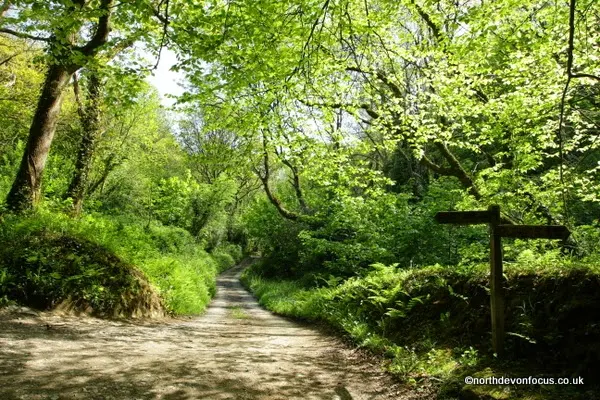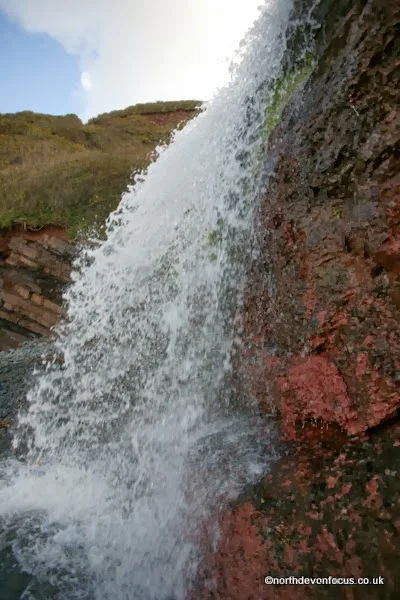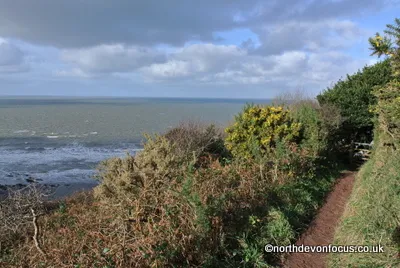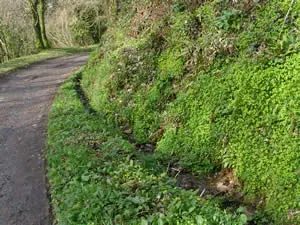I love it when the sun breaks through
the trees. I always try to capture a sunburst and I try even harder not to look into the sun to do it.
It was as warm as a Summer's day on the North Devon Coast
today. I think it may have made it into the record books as one of the hottest October days for some time.
As I wandered down the track towards the coast there was a lot of leaf fall, not much fall colour. The old Beech leaves are still green, I normally wait until November for the leaves to turn. Looks as though the National Trust have been working hard mowing the coastal meadows and clearing up the Bracken. The old Apple Tree must have weighed heavy with apples, lots of juicy red ones now lying on the ground important for birds, bugs and wildlife stocking up for the winter. The newly renovated orchard now has a seat and will make a magical resting place for tired walkers. I miss the flowering then berry-filled Hawthorn but the plus side of losing that will be the sight of apple blossom in the years to come.
There was one huge fungi on the trunk of one of the old Beech trees last year, this year they are climbing up the trunk, mycelium at its best or worst if they are damaging the tree.
It was really hot on the coast path overlooking Bideford Bay and there were a few wildflowers still blooming beside the track. Devil's Bit Scabious, Red Campion, Fumitory, Autumn Hawkbit, Hawkweed and Yarrow. A few solitary bees but my attention was taken by a movement on the Yarrow, a wonderfully fluttery teeny butterfly, a Small Copper. I watched the other day as a pair were dancing together in ,the permaculture garden at Tapeley. A fleeting moment, then it was gone, much like the Sunburst. (Article Pat Adams 10/10/2018)
-------------------
All articles and photos copyright Pat Adams North Devon Focus (All rights reserved)


















































